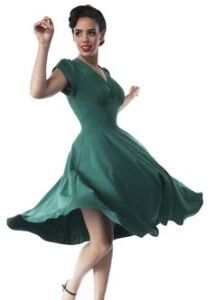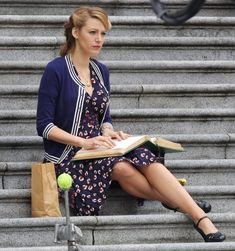Embracing Timeless Elegance: Exploring Vintage Fashion Trends
In the ever-evolving world of fashion, there’s a timeless allure to vintage styles that continues to captivate enthusiasts and trendsetters alike. Vintage fashion isn’t just about recycling old clothing; it’s a celebration of the rich history, craftsmanship, and enduring elegance of bygone eras. From glamorous 1920s flapper dresses to the rebellious spirit of 1980s punk, vintage fashion offers a treasure trove of inspiration that transcends generations. In this article, we’ll delve into the fascinating world of vintage fashion, exploring its enduring appeal and highlighting some iconic trends that continue to influence contemporary style.
The Allure of Vintage Fashion
Vintage fashion possesses a unique charm that sets it apart from the ever-changing trends of modern apparel. At its core, vintage style embodies a sense of nostalgia, transporting wearers to different epochs while allowing them to express their individuality. Whether it’s the opulent glamour of old Hollywood or the free-spirited bohemian vibes of the 1970s, each era offers its own distinct aesthetic that resonates with fashion aficionados seeking something beyond the ordinary.

Iconic Decades and Trends
The Roaring Twenties: Flappers and Art Deco Glamour
The 1920s ushered in a revolutionary era of fashion characterized by liberated silhouettes, embellished fabrics, and a spirit of rebellion. Flapper dresses with their dropped waists and fringe details became synonymous with the era’s newfound sense of freedom and empowerment. Meanwhile, the Art Deco movement influenced jewelry and accessories, with geometric motifs and luxurious materials epitomizing the opulence of the Jazz Age.
The Fabulous Fifties: Nipped Waists and Full Skirts
Following the austerity of wartime fashion, the 1950s embraced femininity with full force. Dior’s New Look, featuring nipped-in waists and voluminous skirts, revolutionized post-war style and emphasized an hourglass silhouette. Pastel hues, floral prints, and playful polka dots dominated women’s wardrobes, while men embraced tailored suits and classic preppy attire.
Swinging Sixties: Youthful Rebellion and Mod Chic
The 1960s witnessed a cultural revolution that extended to fashion, with the rise of youth subcultures challenging traditional norms. The mod movement, characterized by geometric patterns, bold colors, and sleek silhouettes, captured the zeitgeist of the era. Iconic pieces such as the mini skirt, shift dress, and go-go boots epitomized the youthful exuberance and progressive spirit of the Swinging Sixties.

The Disco Era: Glitter and Glamour
The 1970s disco era brought forth a hedonistic blend of opulence and escapism, reflected in the era’s flamboyant fashion choices. Sequins, metallic fabrics, and bold prints adorned disco divas as they danced the night away in Studio 54. Wide-leg trousers, platform shoes, and plunging necklines epitomized the era’s glamorous aesthetic, while androgynous styles challenged traditional gender norms.
Punk Rock Rebellion: DIY Attitude and Subversive Style
The 1980s punk movement rebelled against the excesses of mainstream culture, embracing a DIY ethos and subversive aesthetic. Leather jackets, ripped jeans, and safety pin embellishments became emblematic of punk’s anti-establishment attitude. Vivienne Westwood and Malcolm McLaren’s iconic designs epitomized the marriage of fashion and rebellion, inspiring generations of alternative style aficionados.
Incorporating Vintage into Modern Wardrobes
While vintage fashion celebrates the past, it also has a significant influence on contemporary style. Incorporating vintage pieces into modern wardrobes allows individuals to create unique and personalized looks that pay homage to fashion history while remaining relevant and on-trend. Whether it’s mixing vintage finds with current pieces or reinterpreting iconic styles for the present day, there are endless possibilities for blending the old with the new.

Sustainability and Ethical Fashion
In addition to its aesthetic appeal, vintage fashion also aligns with growing concerns about sustainability and ethical consumption. By embracing pre-loved clothing and accessories, individuals can reduce their environmental impact and support a more circular economy. Vintage shopping offers a more sustainable alternative to fast fashion, allowing for the preservation and appreciation of timeless pieces that might otherwise be discarded.
Conclusion:
Vintage fashion is more than just a trend; it’s a testament to the enduring influence of the past on contemporary style. From the timeless elegance of bygone eras to the rebellious spirit of youth subcultures, vintage fashion offers a rich tapestry of inspiration for fashion enthusiasts around the world. By embracing vintage style, we not only celebrate the craftsmanship and creativity of the past but also contribute to a more sustainable and ethical approach to fashion consumption. So whether you’re channeling the glamour of the 1920s or the rebelliousness of punk rock, remember that style knows no bounds when it comes to embracing the beauty of vintage fashion.
